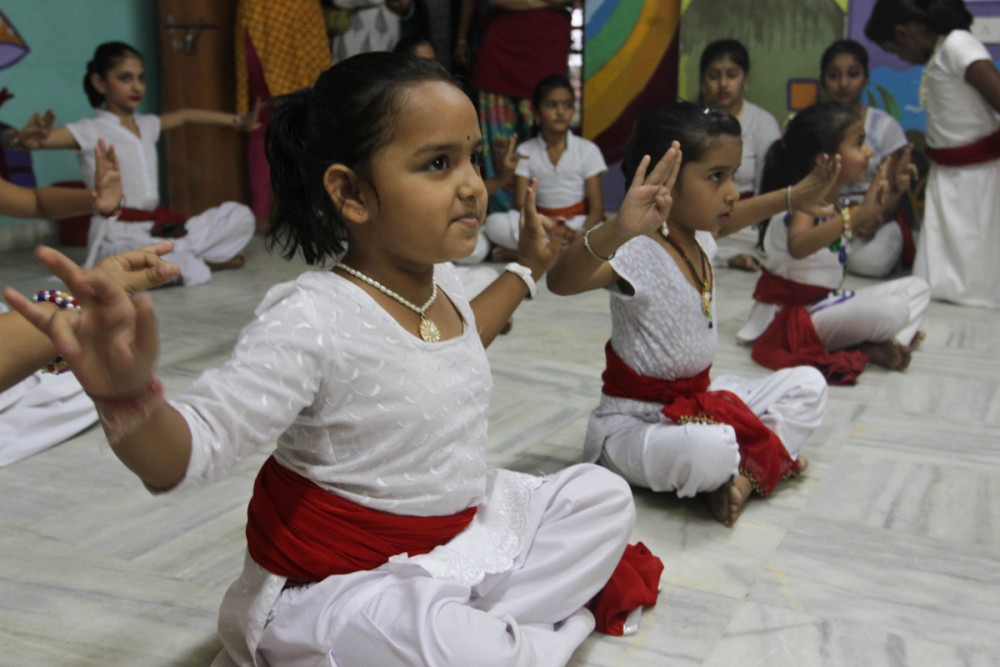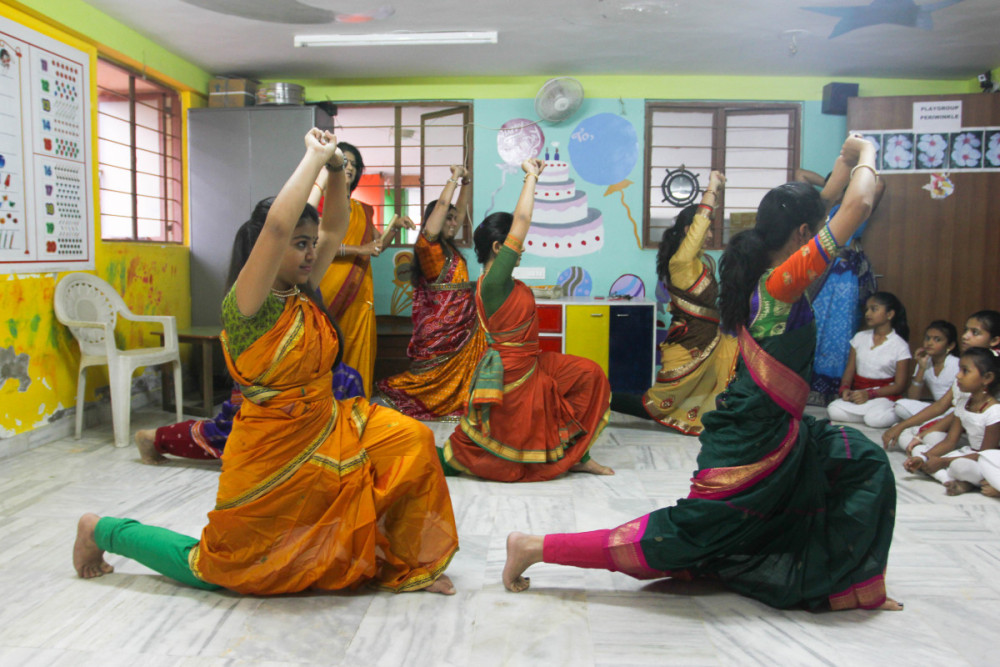Classical Hindu Bharatnatyam Dancers Worship on the Dancefloor in Ahmedabad
AHMEDABAD— At the center of one of the most religiously diverse cities in the world, believers of many different faiths come together on a common sacred ground: the dance floor. For 35 years, Bhairaviben Hemant has worked to master and teach the art and grace of the classical Bharatnatyam dance to young girls in Ahmedabad, India. This classic dance involves facial expressions that that correlate with musical intonations based on historic Vedic texts. Hemant is one of many Hindus who believe that this performing art tradition was drawn from early Sanskrit writings of Lord Brahma nearly 5,000 years ago.
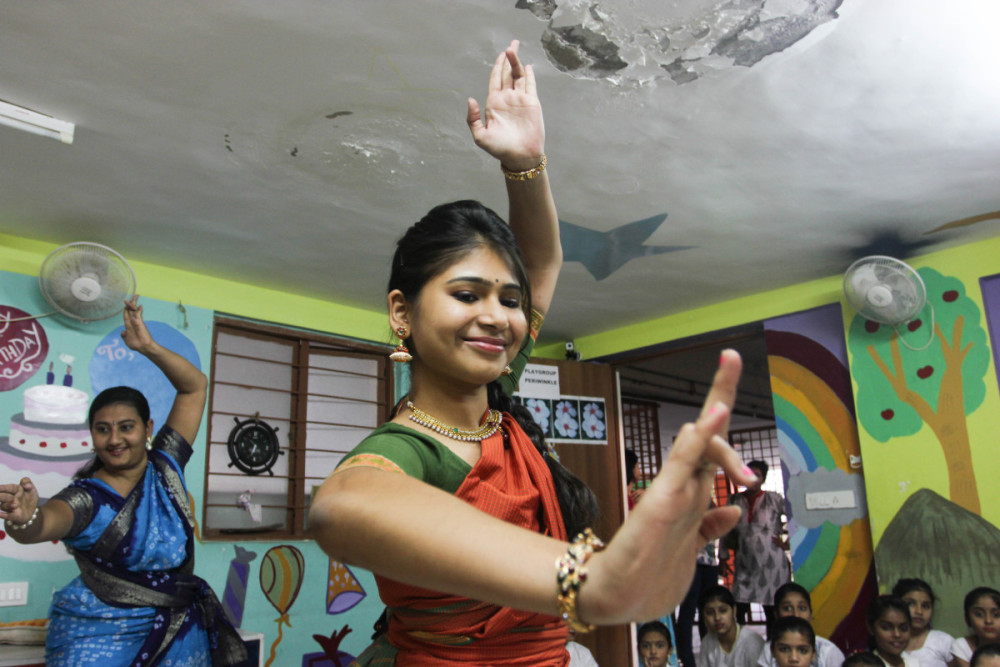
Indian women in advanced Bharatnatyam dance hold the sculpturesque Shiva Pose and accompanying facial expressions. This pose represents both the destruction and the creation of the universe, symbolizing the cycles of death, birth and rebirth.
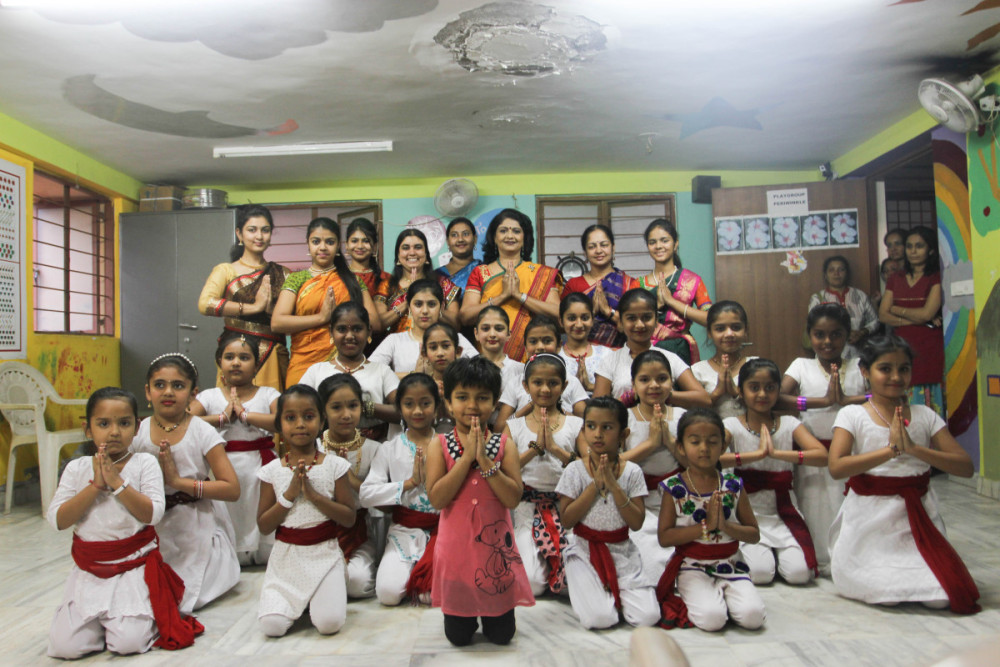
Bhairaviben Hemant teaches 8 different dance classes each day, targeting those from age 5 to age 55, in Ahmadabad, Gujarat. Hemant has been dancing since she was 5 years old. She went on to study under legendary dancer Mrinalini Sarabhai at the Darpana Academy of Performing Arts. She views dance as a form of worship and devotion, she said. And it’s exhibited in her teaching style. “I teach all the things with god, and am synchronized with god,” she said. “I told parents in my classes, if the gods send you here then you will come here. Otherwise, you won’t.”
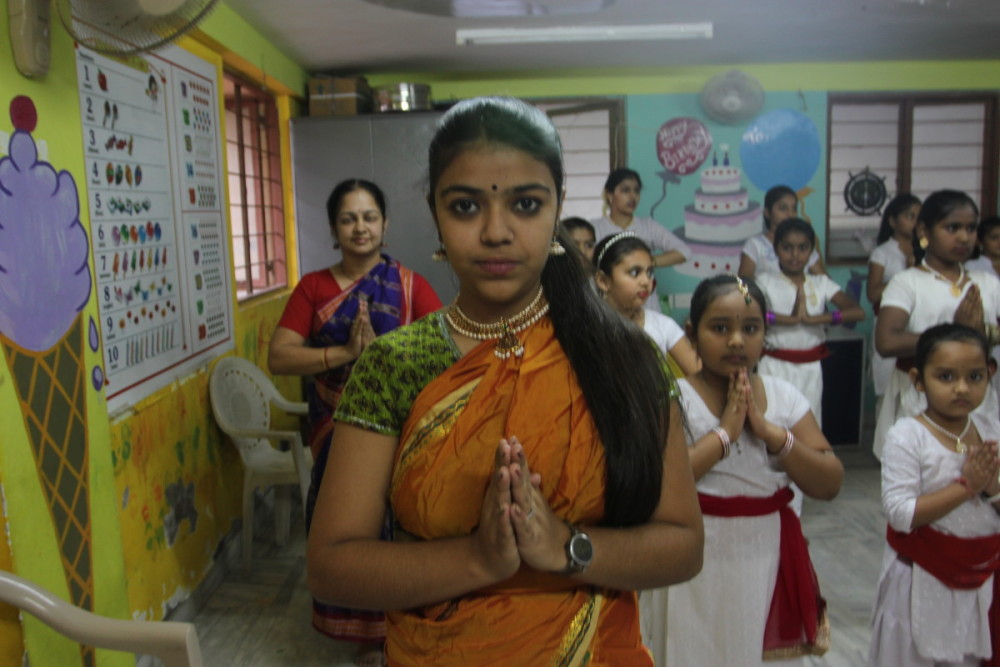
Hemant begins dance class with a verbal prayer. Many of her students come from different faith communities, like Jainism, Islam and Christianity. However, each identifies with the spirituality of the dances. For Hemant, dance is a form of prayer and an act of devotion to the gods of her Hindu faith. “The Veda said the shortest way to God is through dance,” she said. “It’s tradition. We begin with a prayer and ask for blessing from the guru, before we begin dancing.”
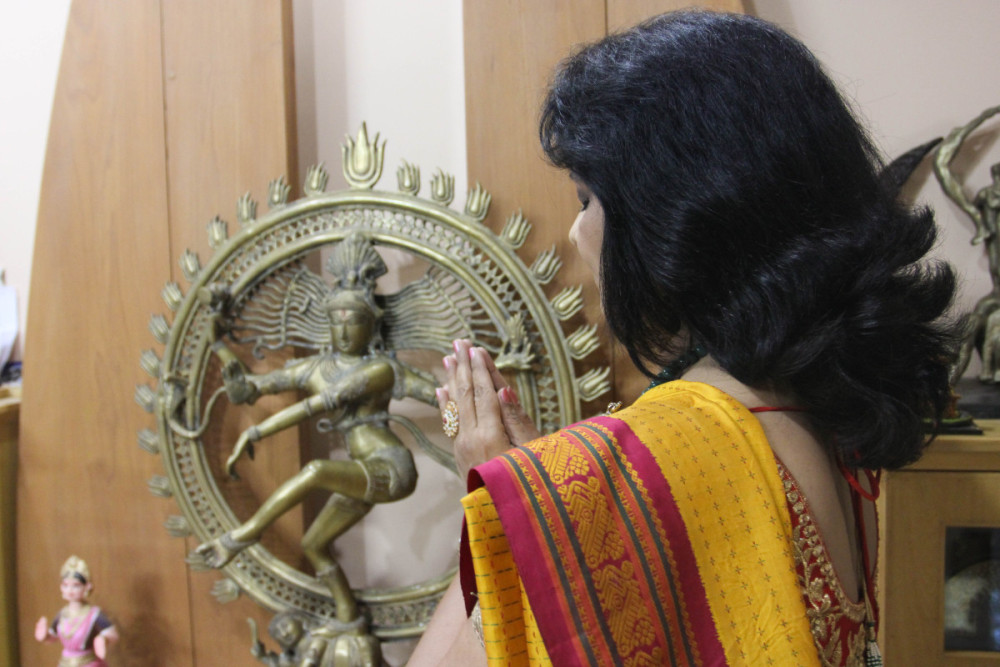
Hemant prays daily to Lord Shiva, the goddess of dance, before leaving the house to teach eight classical dance classes. She touches her hand to the bronze sculpture that overlooks her home. While Hemant doesn’t coerce her students to believe in Hinduism, she brings a Lord Shiva to class. “After some time, they automatically bring their own Lord Shiva even if they are not Hindu. They come to feel a connection to a higher being through dancing, whatever their religion.”
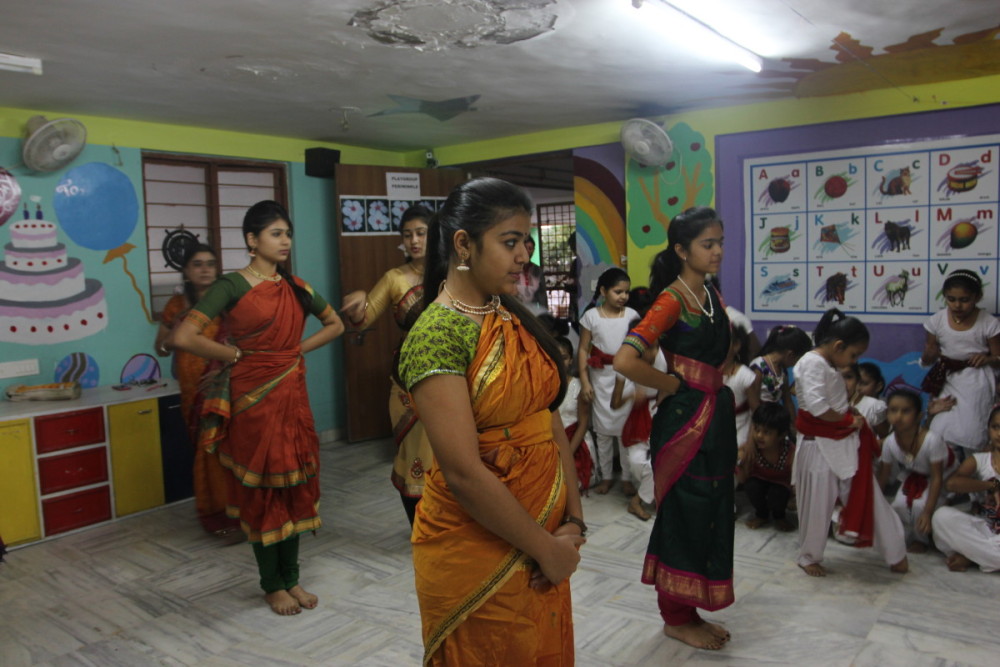
Different forms of Indian classical dance exemplify purity, modesty and respect, Hemant said. “A Bharatanatyam dancer can be identified by they way she walks, the way she moves,” said Hemant. “Every dancer has beautiful eyes, is tall, slim and beautiful.”
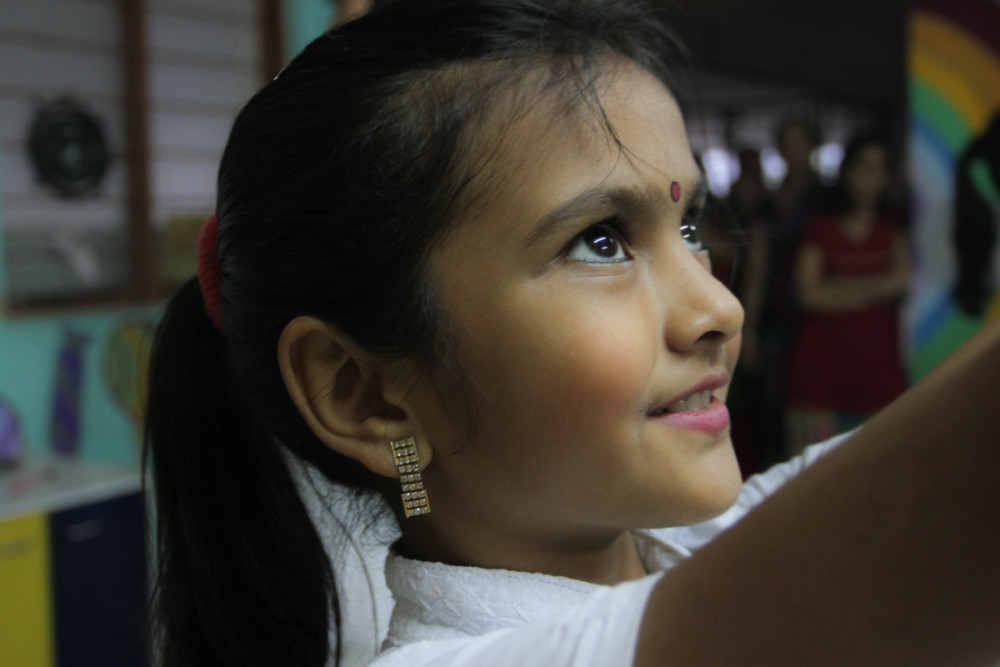
A young dancer poses with facial expressions with their eyes and eyebrows, showing anger, sadness and happiness, as a form of storytelling. These dances are often performed in a Hindu temple as a form of darshan, or visualization of god.
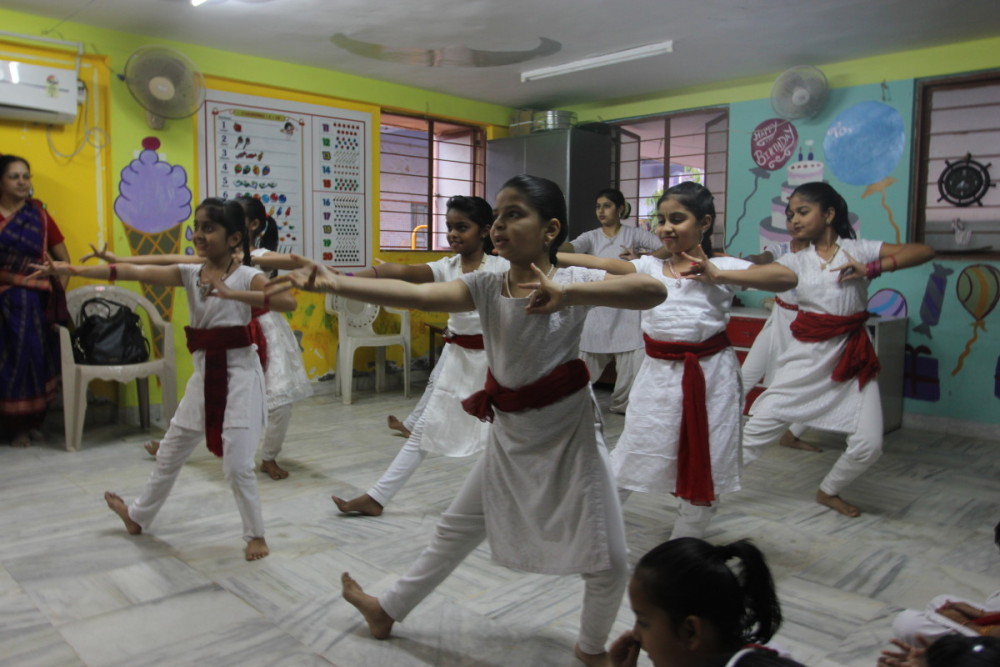
Young dancers lift their heel and bang it against the floor in a classic Indian pose. For many of Hemant’s students, the dance floor is a sanctuary, she said. It’s a place where girls can connect to a higher deity through their movement.
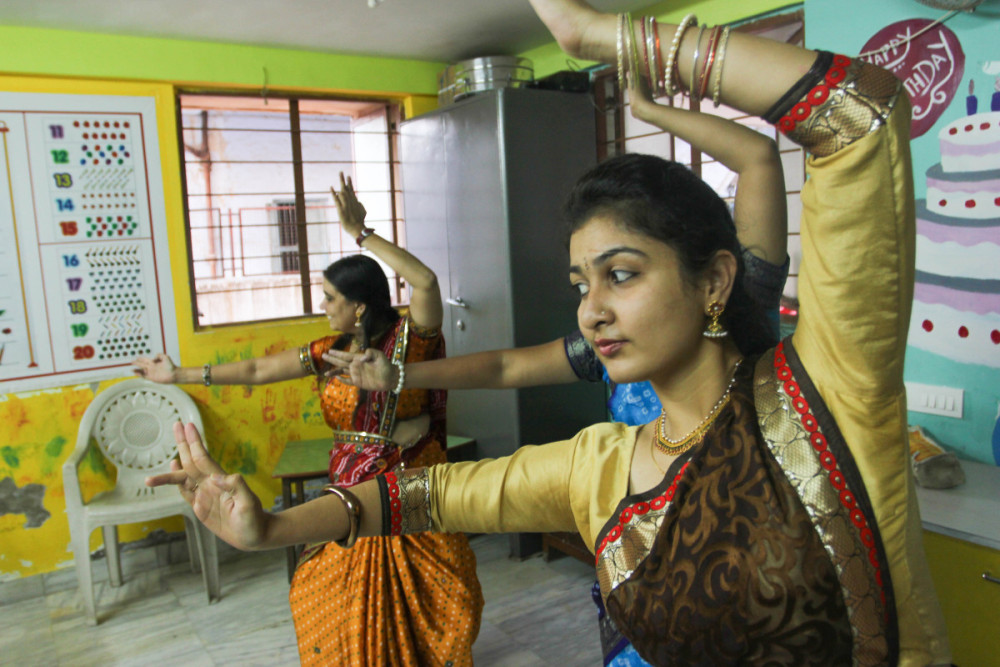
The women hold the Shiva Pose as sticks are tapped by the instructor. Bharatanatyam dance requires intense concentration, said Bhairaviben Hemant. “When I’m dancing, I can’t do anything else.”
